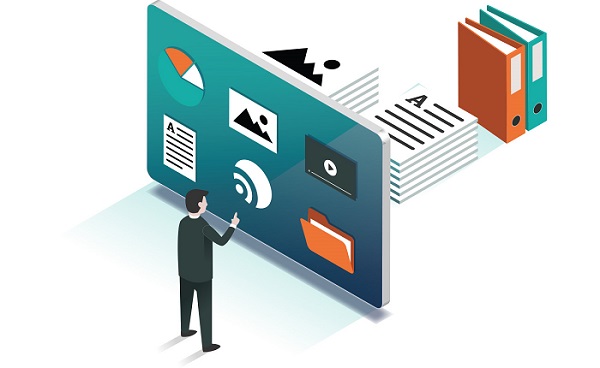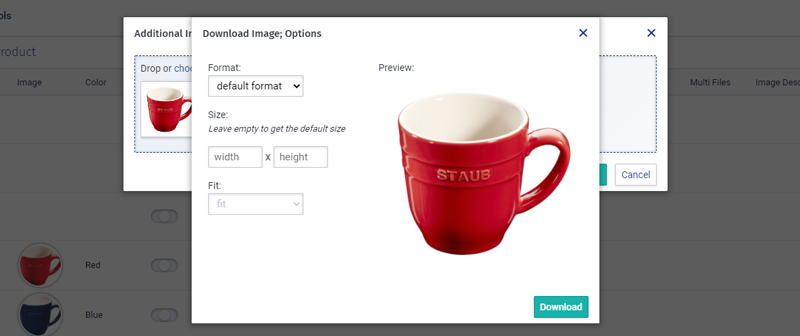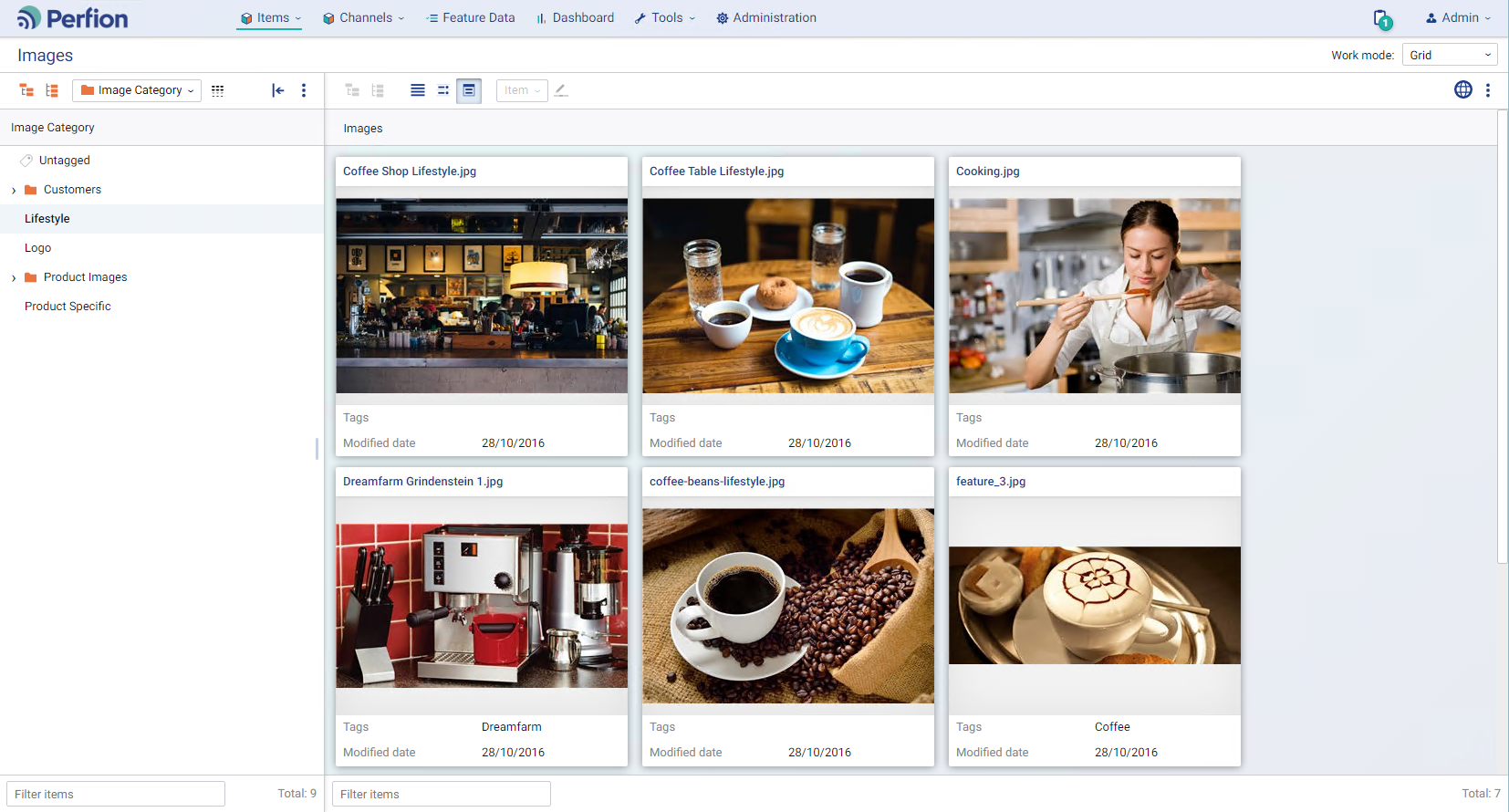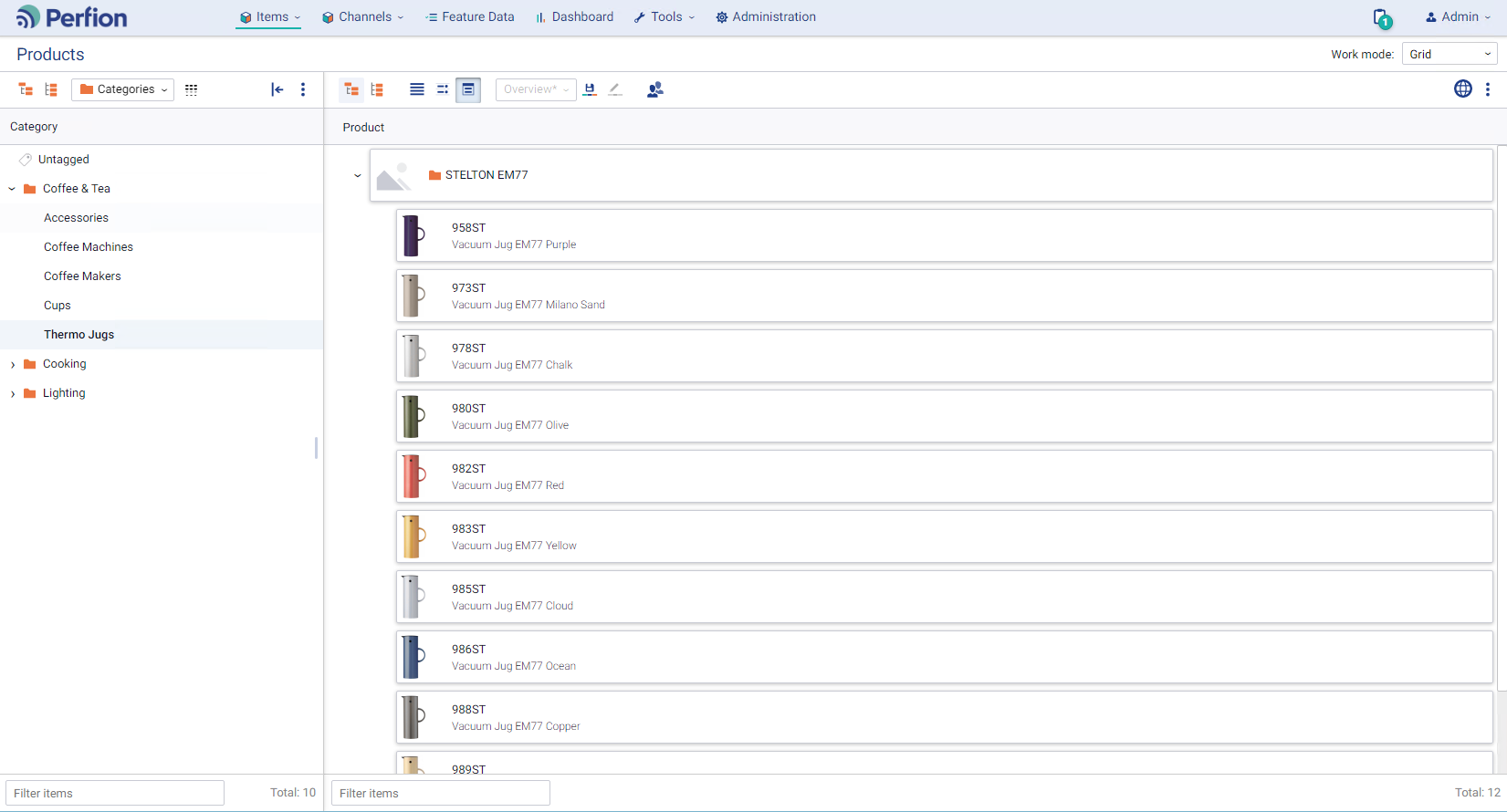Digital Asset Management (DAM) in the Perfion PIM system
Store and organize all of your product related photos and files in the Perfion Product Information Manangement (PIM) system.
With the Perfion PIM system, you will also have a system for Digital Asset Management (DAM). This means that you can save, organize, and manage all your product-related images and files in the Product Management system (PIM).

The major advantage is that you only need to administer one version of your image or your file. All other formats and sizes are generated from the original, precisely when you need it – tailored to the given channel (web, catalog, etc.) in terms of both size and file format.
A system for Digital Asset Management provides an overview and saves you lots of time when you working with your product information.
You can manage all file types with Perfion's DAM features, for example:
- Images / pictures
- Video
- Audio
- Animations
Automatic scaling of images
Image editing is time-consuming when you manually adjust the sizes and formats of images for various marketing channels.
With the Perfion PIM system, conversion and scaling takes place automatically. With a simple set of rules, you can control how your images are to be scaled to the correct DPI resolution or specific pixel dimensions for example.
It is often a good idea to save original images in TIF or Adobe's PSD format, but these formats are not suitable for showing on websites, etc. Perfion PIM automatically generates versions in .jpg, .png, or .gif for the relevant marketing channels such as websites, webshops, or print catalogs.
Similarly, vector graphics can be saved in the original version and easily be converted to a usable format as a part of publication.
So with Perfion PIM, you only need to maintain one single version of your file.

DAM tailored to your needs
Perfion PIM can easily be scaled to handle lots of traffic on the website and thus many "inquiries" for views of images or other file types. Each time a user sees a product, an image is fetched directly from Perfion PIM and cached (saved) on the web server so that the image does not need to be fetched again when a new user views the same image.
Adding new web servers which automatically build their own caches is easy, which means that the system's performance increases linearly with the number of servers.
Arrange your file library as you wish
In Perfion PIM, you can create just as many media libraries as you need – for example for images, drawings, lifestyle images, product illustrations, press material, etc.
This is how the need for overview is combined with the desire for flexibility.
Examples:


Add meta information to your files
In order to administer your files, you can attach all the information you need, so-called meta data or meta information, to your images an other media files. This can be descriptions, purposes, expiration dates, validity, type, photographer, names of people in the image or the video, etc. You can even attach media files to other media files. In addition, you can group your files based on different types of data information.
In other words, Perfion's DAM feature makes it possible for you to create as complex correlations and hierarchies as you wish and still maintain control of your media files.
Store your image, video and audio files in the cloud or on-premise
With Perfion, each company can decide whether their own images, videos and audio files are stored in a database of their own choice, or whether Perfion should store them in our cloud service. The end-user functionality and integration possibilities are the same.
Related blog posts:
PIM vs. Digital Asset Management (DAM): What's the Difference?